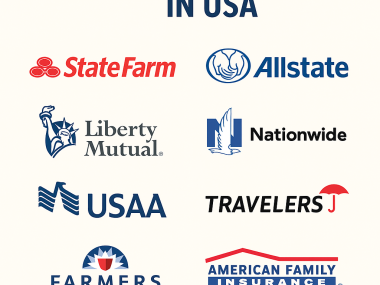Business Loans in USA
Introduction
Starting and running a business in the USA is an exciting endeavor, but it comes with financial challenges that can make or break a company. Rising costs of raw materials, employee salaries, rental spaces, and operational expenses have made cash flow management more critical than ever. Business loans in the USA are a crucial resource for entrepreneurs looking to cover these costs, expand their operations, or invest in new technology. Access to affordable financing can empower small businesses to remain competitive, seize growth opportunities, and achieve long-term stability. Best Travel Insurance Australia
For startups and small businesses, securing funding can feel overwhelming. Limited credit history, lack of collateral, or uncertain revenue streams often create barriers to traditional financing. Fortunately, the U.S. lending ecosystem is diverse, with options ranging from traditional banks and credit unions to SBA-backed loans, online lenders, and alternative funding platforms. Understanding the types of loans available, eligibility requirements, interest rates, and repayment terms is vital for making informed financial decisions. Personal Loan for Bad Credit in the USA
Beyond providing immediate capital, business loans also contribute to credibility and financial health. Timely repayment builds strong business credit profiles, which can improve access to future financing and attract potential investors. Strategic borrowing enables companies to expand into new markets, hire skilled employees, purchase equipment, or invest in marketing strategies that boost profitability. With proper planning, business loans in the USA can serve as a powerful tool for sustainable growth.
What Are Business Loans in USA?
Business loans in the USA are financial products designed to provide funding for various operational, expansion, or emergency needs. These loans are offered by banks, credit unions, SBA programs, online lenders, and alternative financing platforms. Each type of loan has distinct terms, interest rates, eligibility criteria, and repayment structures. Business Loans in Nigeria
Key reasons businesses seek loans include:
-
Covering operating costs during slow periods or seasonal fluctuations.
-
Purchasing equipment, machinery, or inventory.
-
Expanding into new markets or opening additional locations.
-
Refinancing high-interest debt to reduce costs. Farm Jobs in New Zealand with Visa Sponsorship
-
Funding marketing campaigns, technology upgrades, or workforce expansion.
Loans can be secured (requiring collateral) or unsecured (based on creditworthiness). Choosing the right type of loan is critical to ensure that borrowing supports growth rather than creating unnecessary financial strain.
Types of Business Loans in USA
1. SBA Loans
Overview: SBA loans are partially guaranteed by the Small Business Administration, making them less risky for lenders. They are ideal for startups and small businesses needing long-term funding with favorable interest rates.
Pros:
-
Lower interest rates (typically 5–10%).
-
Longer repayment terms (up to 25 years for real estate).
-
Flexible use of funds. Mechanic Engineers in Australia with Visa Sponsorship
Cons:
-
Lengthy approval process (weeks to months).
-
Extensive documentation required.
Example: A small bakery in Texas used an SBA loan to purchase new ovens and expand production. The lower interest rate allowed the business to repay comfortably while increasing revenue.
2. Term Loans
Overview: Term loans provide a fixed sum of money for a predetermined period. Businesses repay principal and interest in scheduled installments.
Pros:
-
Predictable payments.
-
Suitable for large investments like equipment or property.
Cons:
-
May require collateral.
-
Less flexible if cash flow fluctuates.
Example: A landscaping company in California secured a 5-year term loan to purchase trucks and equipment. The loan enabled them to take on larger projects without straining their budget.
3. Business Lines of Credit
Overview: A business line of credit allows a company to borrow up to a predetermined limit and pay interest only on the amount used.
Pros:
-
Flexible cash flow management.
-
Only pay interest on borrowed funds.
Cons:
-
Higher interest rates for unsecured lines.
-
May have maintenance fees.
Example: An online retail startup used a line of credit to manage inventory purchases during peak seasons, ensuring they could meet customer demand without overspending.
4. Invoice Financing
Overview: Invoice financing provides cash advances based on unpaid invoices. Lenders typically advance 70–90% of the invoice value.
Pros:
-
Immediate cash flow relief.
-
No collateral required beyond the invoices.
Cons:
-
Fees can be high.
-
Dependent on client payment reliability.
Example: A B2B consulting firm used invoice financing to cover payroll while waiting for client payments, maintaining employee satisfaction and operational continuity. Best Personal Loans in the UK 2025
5. Equipment Financing
Overview: Equipment financing loans are specifically for purchasing machinery, vehicles, or technology. The equipment itself serves as collateral.
Pros:
-
Secured loan often comes with lower interest rates.
-
Preserve cash flow for other expenses.
Cons:
-
Only applicable to equipment purchases.
-
Default may result in equipment repossession.
Example: A construction company financed a new excavator, allowing them to bid on larger projects and increase annual revenue.
6. Merchant Cash Advances
Overview: Merchant cash advances provide upfront funds in exchange for a percentage of future sales.
Pros:
-
Fast access to capital.
-
Repayment adjusts with sales volume.
Cons:
-
Very high fees.
-
Short repayment terms.
Example: A small cafe used a merchant cash advance to cover renovations before a busy holiday season, repaying the advance directly from sales proceeds. Hospitals in USA Sponsoring International Nurses
Top Business Loan Providers in USA
| Lender | Loan Types | Pros | Cons | Average Interest Rate |
|---|---|---|---|---|
| JPMorgan Chase | SBA, term loans, lines of credit | Large network, robust support | Stricter eligibility | 6–12% |
| Bank of America | SBA, equipment financing | Flexible options, online tools | Longer approval | 5–11% |
| Wells Fargo | Term loans, lines of credit | Multiple loan options | Lengthy documentation | 6–12% |
| Live Oak Bank | SBA, niche loans | Tailored for startups | Limited physical branches | 5–10% |
| OnDeck | Term loans, lines of credit | Fast online approval | Higher interest rates | 9–30% |
| Funding Circle | Peer-to-peer loans | Accessible for growing businesses | Shorter repayment terms | 7–15% |
Eligibility Criteria for Business Loans in USA
-
Minimum credit score (typically 650+ for traditional banks).
-
Business registration and legal documentation.
-
Financial statements, tax returns, and bank statements. Top Home Insurance Companies in USA
-
Business plan and revenue projections (especially for startups).
-
Collateral for secured loans (optional for some SBA and online loans).
Maintaining accurate records and meeting eligibility requirements significantly improves approval chances and access to favorable loan terms.
How Much Do Business Loans Cost?
Interest rates vary based on loan type, creditworthiness, and lender. Typical ranges include:
-
SBA Loans: 5–10%
-
Term Loans: 6–12%
-
Lines of Credit: 7–20%
-
Invoice Financing: 1–3% of invoice value per month Visa Sponsorship Sweden Jobs
-
Merchant Cash Advances: 10–30%
Fees such as origination, processing, or prepayment penalties may also apply. Proper planning and comparison shopping are essential to avoid overpaying.
Advantages of Business Loans
-
Access to Capital: Provides necessary funds to cover operations or growth projects.
-
Credit Building: Timely repayment enhances business credit scores. Finland Visa Sponsorship Jobs
-
Flexibility: Various loan types accommodate different business needs.
-
Scalability: Loans enable expansion without depleting personal funds.
Challenges of Business Loans
-
High Interest Rates: Particularly for unsecured or alternative loans.
-
Collateral Risk: Secured loans may risk personal or business assets. Amex Loan Login
-
Strict Requirements: Some lenders demand strong credit or extensive documentation.
-
Debt Obligations: Loan repayments can strain cash flow if mismanaged.
Step-by-Step Guide: How to Apply for a Business Loan
-
Assess funding needs and determine loan purpose.
-
Check eligibility based on credit, revenue, and business age.
-
Research lenders and compare loan products.
-
Prepare documents: tax returns, bank statements, business plan, legal registration.
-
Submit applications online or in-person. Denmark Visa Sponsorship Jobs
-
Review loan offers, interest rates, and repayment terms.
-
Negotiate terms if possible.
-
Receive funds and integrate them into business operations.
-
Maintain timely repayments to build credit and avoid penalties.
Common Mistakes to Avoid
-
Borrowing more than necessary.
-
Ignoring total cost including fees.
-
Not comparing multiple lenders. Compare Vehicle Insurance
-
Failing to maintain accurate financial records.
-
Using short-term loans for long-term investments.
Alternative Funding Options Beyond Traditional Loans
-
Grants: Government or private grants do not require repayment.
-
Crowdfunding: Platforms like Kickstarter or GoFundMe allow raising capital from the public.
-
Angel Investors: High-net-worth individuals who invest in exchange for equity.
-
Venture Capital: Large-scale funding for high-growth startups, often with equity stakes.
How Business Loans Affect Tax Strategy
-
Interest paid on business loans is usually tax-deductible. Mortgages in Finland with a Small Down Payment
-
Strategic borrowing can reduce taxable income.
-
Using loans for capital expenditures may allow for depreciation benefits.
FAQs About Business Loans in USA
Q1: Can startups with no revenue get a loan?
A: Yes, through SBA microloans, equipment financing, or online lenders who consider business plans.
Q2: How long does approval take?
A: Traditional banks may take weeks; online lenders can approve in 24–72 hours.
Q3: What loan is best for cash flow?
A: Lines of credit or invoice financing.
Q4: Are loan interest payments deductible?
A: Yes, they are generally tax-deductible.
Q5: Can I refinance a business loan?
A: Yes, to secure better rates or terms.
Q6: Are merchant cash advances safe?
A: They are high-cost but useful for short-term funding.
Q7: Is collateral always required?
A: Only for secured loans; unsecured loans don’t require it but may have higher rates. KfW Loans for Small Businesses in Germany
Q8: Can business loans be used for marketing?
A: Yes, funds can be used for growth, including advertising.
Q9: Do all lenders require a business plan?
A: Most lenders want a business plan, especially startups.
Q10: Can I combine loans?
A: Yes, but ensure total debt is manageable.
Conclusion
Business loans in the USA provide critical funding solutions for entrepreneurs and established companies. Visa Sponsorship Jobs in Canada By understanding the types of loans, eligibility requirements, top lenders, costs, and alternative financing options, businesses can secure affordable capital to grow, scale, and maintain financial stability. Strategic borrowing, timely repayment, and careful planning make business loans a powerful tool for achieving long-term success.












